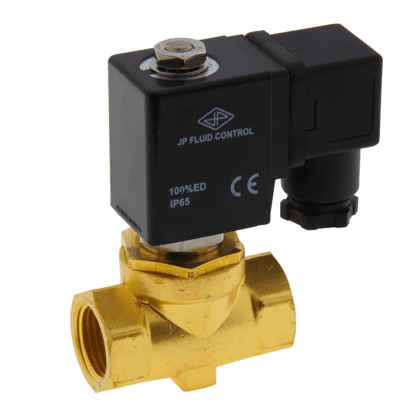Solenoid Valves: Choosing the Right Option for Power Generation Applications

Solenoid valves play a crucial role in power generation applications, providing reliable and efficient control over fluid and gas flow. Their ability to operate quickly and precisely makes them indispensable in power plants, ensuring seamless operations and enhanced safety. In this article, we will look into the fundamentals of solenoid valve operation, explore their significance in power generation, and discuss how to choose the right valve for specific power generation applications.
Understanding Solenoid ValvesSolenoid valves are electromechanical devices that control the flow of liquids or gasses using an electromagnetic solenoid. They consist of a coil, plunger, and valve body, and their operation is based on the principle of electromagnetism. When an electrical current passes through the coil, it generates a magnetic field that attracts or repels the plunger, opening or closing the valve ports.
 Solenoid valves can be used for many functions at power plants. Courtesy: TamesonRole of Solenoid Valves in Power Generation
Solenoid valves can be used for many functions at power plants. Courtesy: TamesonRole of Solenoid Valves in Power GenerationIn power generation, solenoid valves perform critical functions such as controlling the flow of water, steam, fuel, and other fluids or gasses. Here are a few applications where solenoid valves prove invaluable:
- Steam Control. Solenoid valves regulate the flow of steam in power plants, ensuring the efficient operation of turbines, boilers, and other steam-based systems. They enable precise control over steam admission, extraction, and bypass, optimizing power generation and preventing equipment damage.
- Fuel Gas Handling. Solenoid valves are employed in power plants to control the flow of natural gas, diesel, or other fuels. They enable safe and reliable shutoff, pressure regulation, and flow control in combustion systems, ensuring proper fuel supply and minimizing the risk of accidents.
- Cooling Systems. Solenoid valves play a vital role in cooling systems by regulating the flow of water or coolant. They help maintain optimal temperatures in various power generation components, such as heat exchangers, condensers, and cooling towers.
- Hydraulic and Pneumatic Control. Solenoid valves are widely used in hydraulic and pneumatic systems within power plants. They control the flow and pressure of fluids or gases, enabling precise operation of actuators, valves, and other equipment.
Selecting the appropriate solenoid valve for power generation applications requires careful consideration of several factors. These include:
- Fluid Compatibility. Determine the compatibility of the valve materials with the fluid being controlled. Consider factors such as fluid type, temperature range, corrosiveness, and any contaminants present. Polyvinyl chloride (PVC), brass, and stainless steel are commonly used in solenoid valves.
- Valve Actuation. Determine the preferred method of valve actuation based on the system requirements. Solenoid valves can be operated in various ways, such as normally closed (NC) or normally open (NO) configurations. Additionally, consider the response time and power requirements of the valve's actuation mechanism to ensure compatibility with the power-generation system.
- Valve Size and Flow Capacity. Consider the required flowrate and pressure drop across the valve. Select a valve size that can handle the desired flow capacity while maintaining acceptable pressure losses.
- Pressure and Temperature Ratings. Evaluate the system's operating pressure and temperature ranges. Select a solenoid valve that can handle the maximum pressure and temperature encountered in the application without compromising its integrity or performance.
- Electrical Compatibility. Evaluate the electrical requirements of the solenoid valve, such as voltage, current, and frequency. Ensure that the valve's electrical characteristics match the available power supply in the power-generation system. Consider factors such as the voltage type (alternating current [AC] or direct current [DC]), coil insulation class, and any required certifications for hazardous environments.
- Safety Considerations. Consider safety aspects such as fail-safe features, certifications, and compliance with industry standards. Valves with fail-safe mechanisms, such as spring-return or redundant solenoids, can prevent accidents in critical power generation processes.
Solenoid valves are essential in power generation, providing precise control over fluid and gas flow. Power plants can optimize operations and enhance system performance by considering compatibility, size, reliability, and safety. Choosing high-quality valves ensures efficiency, reduces downtime, and promotes safe and reliable power generation.
-This article was contributed to POWER by Tameson, a global seller of industrial products.
The post Solenoid Valves: Choosing the Right Option for Power Generation Applications appeared first on POWER Magazine.